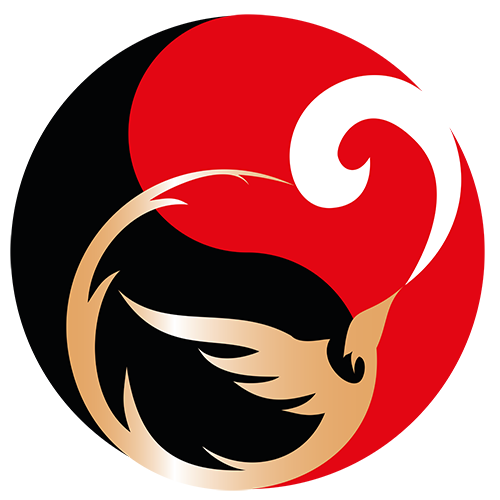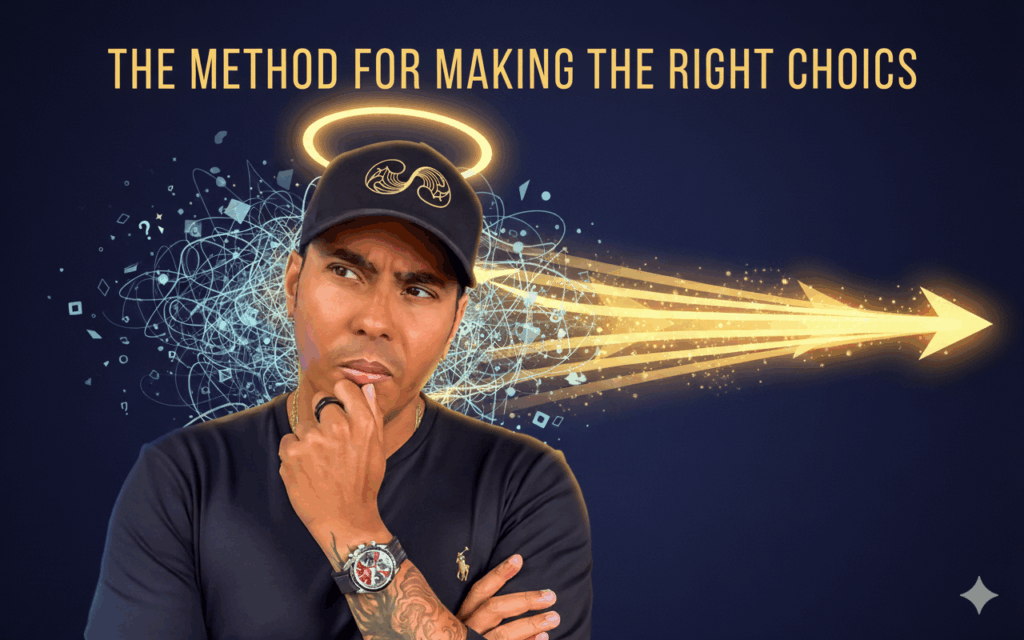How to Sort, Prioritize, and Decide Without Burning Out
Stop drowning in options. Start moving with intention.
You know that feeling—standing at yet another crossroads, paralyzed by possibility.
Should I continue this project or let it go?
Which idea deserves my energy first?
How do I make the right choice when everything feels urgent and nothing feels clear?
These questions don’t just live in your head. They create a low-grade exhaustion that follows you everywhere—a mental fog that makes you feel perpetually behind, even when you’re working harder than ever.
This was a major theme that emerged during my last challenge, and I knew I had to share what I’ve learned over fifteen years of working with ambitious, multi-passionate people who struggle with this exact issue.
Today, I’m giving you a practical framework for creating your own decision-making compass—a tool that will help you sort through the noise, prioritize what truly matters, and reclaim your mental clarity.
Here’s how to build it.
When Everything Seems Urgent, Nothing Really Is
Let me ask you something: Have you ever ended a day feeling productive… yet somehow completely unfulfilled?
You checked off tasks. You answered emails. You moved things forward.
But when you close your laptop, there’s this hollow sensation—a quiet voice asking, “Did any of that actually matter?”
This is the trap of modern dispersion.
You’re so busy managing that you’ve forgotten how to choose.
The pattern looks like this:
- You say yes to everything, terrified of missing an opportunity
- You multiply tasks, tools, and projects in an attempt to cover all bases
- You try to hold it all together until you’re running on fumes
And what you’re left with is decision fatigue—that bone-deep exhaustion that comes from sprinting in circles without a clear destination.
Why You Need a Compass (Not Another To-Do List)
Here’s what separates people who move through life with fluidity from those who remain stuck in perpetual chaos:
It’s not the volume of work. It’s the quality of their decisions.
There’s nothing more exhausting than going fast and hard in the wrong direction.
And to make good decisions, you need a compass.
Not a rigid plan.
Not a method copied from someone else’s life.
But a personal navigation system—a set of internal reference points that bring you back to what matters every time you reach a crossroads.
A compass is your filter for sorting, prioritizing, and deciding.
Let me share mine. This is what I’ve been teaching my clients for fifteen years, and it’s evolved from my own journey through burnout, reinvention, and finally finding a sustainable rhythm:
My Three Core Questions
1. Does this excite me?
If a project doesn’t light something up inside me, it’s going to drain me over time. Enthusiasm is fuel. Without it, even “good” opportunities become obligations.
2. Will I learn something valuable?
What I gain from this experience should feed my growth, not just add to my workload. I’m looking for evolution, not just execution.
3. Does this nourish my mission or values, directly or indirectly?
If it’s not aligned with who I’m becoming, I know I’ll eventually resist it. Misalignment creates friction. Alignment creates flow.
When you filter your decisions through questions like these, everything becomes clearer.
You step out of your overthinking mind. You return to essence.
The True Art of Sorting: Creating Space for What Matters
Sorting isn’t just about cleaning out your inbox or organizing your files.
It’s an act of clarity.
It’s being honest enough with yourself to recognize what no longer serves you:
- Projects you’re keeping “just in case”
- Commitments you maintain out of habit
- Tasks that create the illusion of progress while actually draining your energy
Sorting is lightening your load so you can actually move forward.
Because as long as you’re carrying everything, you can’t accelerate.
And here’s the paradox: when you subtract, you find momentum.
The space you free up becomes fertile ground for ideas that actually matter—the ones that have been waiting for you to finally pay attention.
Prioritizing Isn’t Choosing Between Good and Bad
Prioritization is choosing between good and better.
It’s accepting that you can’t do everything now, but you can do everything… at the right time.
Here’s the question I ask myself (and my clients):
“If I could only focus on three things this week—three things that would genuinely shift my trajectory—what would they be?”
Those three things? That’s your real priority list.
Everything else needs to align around them or disappear.
And it’s okay if this changes over time. Life isn’t static, and neither are your priorities.
What matters is maintaining active awareness of what makes sense for you right now.
How to Decide Without Exhausting Yourself
Decision fatigue is one of the greatest plagues for multi-passionate, ambitious people.
Too many options. Too many ideas. Too many “maybes” floating around.
So here’s my golden rule:
Deciding isn’t about choosing perfectly. It’s about choosing consciously.
An imperfect decision, made with intention and alignment, creates movement.
A perfect decision, endlessly postponed, keeps you stuck.
Flow isn’t about having everything figured out.
Flow is staying in aligned motion.
Your Personal Compass: The Real Secret
The best thing you can do is build your own compass—the one that’s perfectly calibrated to your unique journey.
One that helps you distinguish between decisions made from fear or limiting beliefs, and decisions that genuinely expand you.
Your compass should be based on:
- Your values: What you stand for when no one’s watching
- Your experience: The lessons you’ve already lived
- Your intuition: That quiet knowing beneath the noise
- Your criteria: The non-negotiables that define your path
- Your context: Where you are right now, not where you think you “should” be
You can even create specialized decision frameworks for different areas of your life—finances, relationships, business. I do this, and it saves me countless hours of mental spinning.
The Practice: Building Your Compass
Here’s how to begin:
Step 1: Identify Your Core Questions
What 3-5 questions, when answered honestly, would make most decisions obvious? Start there.
Step 2: Test Them
Use your questions on a pending decision right now. Do they create clarity or more confusion? Refine until they feel true.
Step 3: Make It Visible
Write your compass down. Put it somewhere you’ll see it. A compass only works if you actually use it.
Step 4: Trust the Process
Not every decision will feel perfect, but if it’s aligned with your compass, it’s moving you forward. Trust that.
The Freedom of Conscious Choice
You’ll never eliminate all uncertainty. That’s not the goal.
The goal is to stop being paralyzed by it.
When you have a compass, you stop second-guessing every choice. You stop carrying the weight of “what ifs.” You stop exhausting yourself with decisions that don’t deserve that much mental real estate.
Instead, you choose. You move. You adjust. You keep going.
And somewhere along the way, you realize something profound:
The compass doesn’t just help you decide what to do. It helps you remember who you are.
What does your compass point toward? What questions would help you cut through the noise and find your true north?
The answers are already inside you. You just need to give yourself permission to trust them.
💌 Loved this ? Share & Subscribe to the newsletter…

